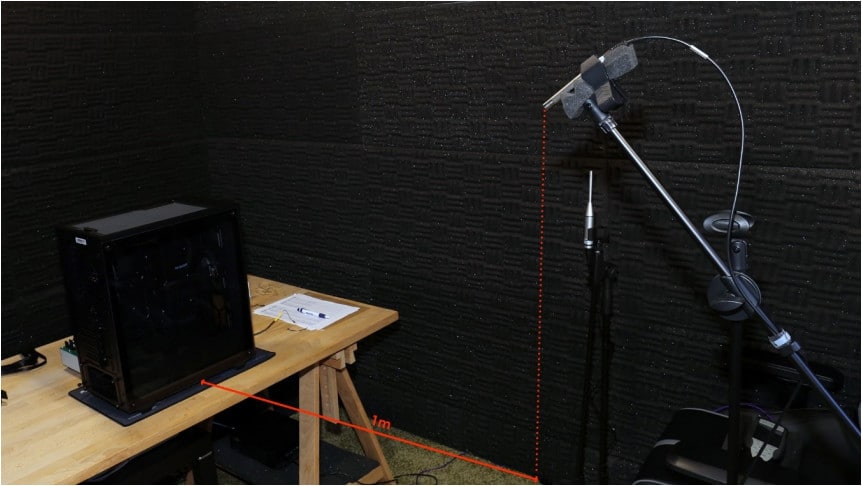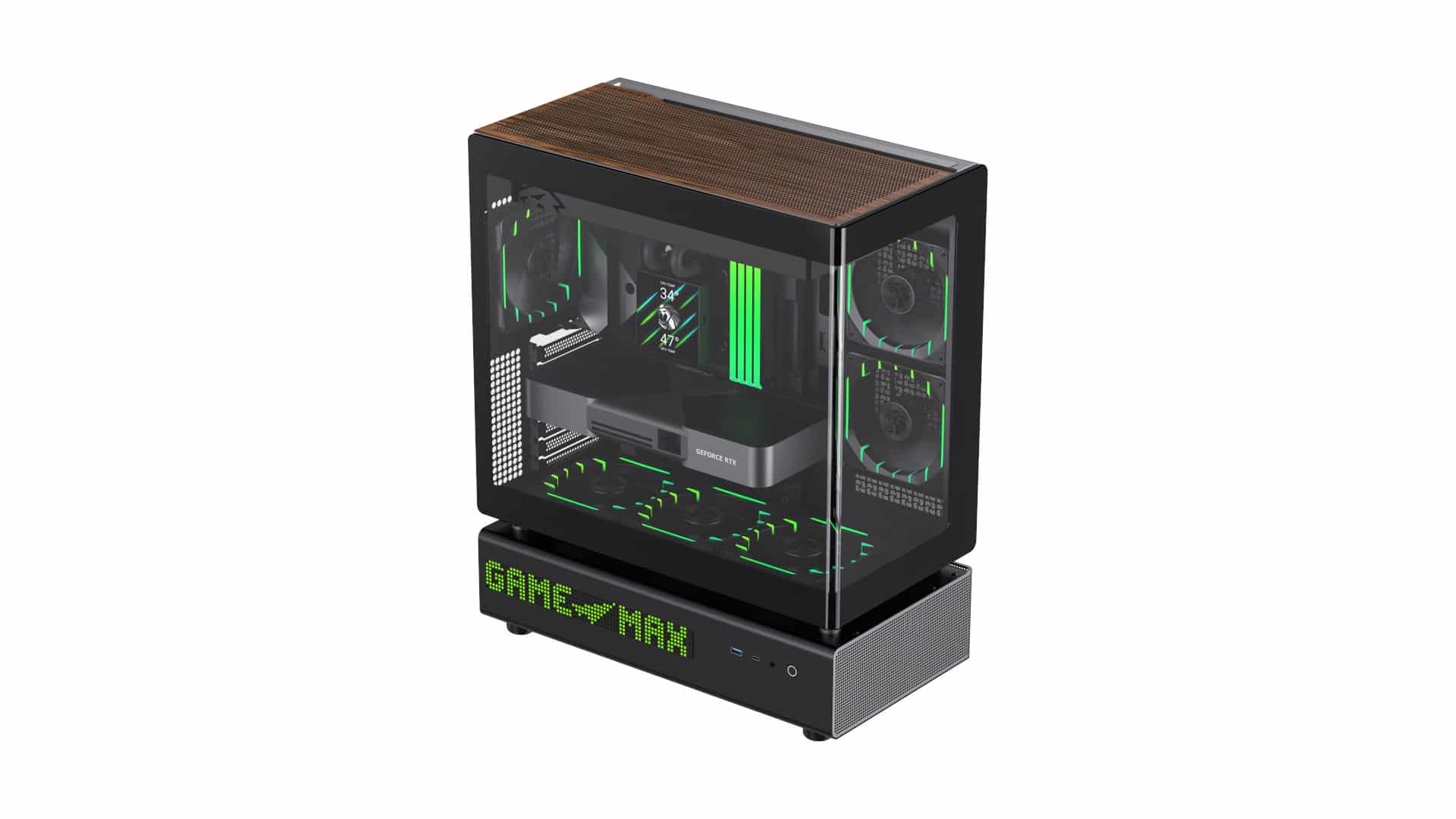Noise Damping & Output Measurements Methodology
I use a Class 1 Bruel & Kjaer 2270 G4 sound analyzer equipped with a Type 4955a microphone with a dBA-weighted dynamic range of below 6 dBA and up to 110 dBA. All tests are conducted inside a hemi-anechoic chamber with close to 6 dBA noise floor and at 25–28 °C ambient. The test subject is placed a meter from the sound analyzer. Before I start the measurements, I calibrate the sound meter using the Bruel & Kjaer Sound Calibrator Type 4231.
Noise Damping Test Procedure
I place a speaker in the measuring position in which I measure its intensity at the following frequencies: 100Hz, 250Hz, 500Hz, 1KHz, 2KHz, 3KHz, 4KHz, 5KHz, 6KHz, 7KHz, 8KHz, 9KHz, 10KHz, 11KHz 13Kz, 12KH 14KHz, 15KHz, 16KHz, 17KHz, 18KHz, 19KHz, 19.5KHz, 20KHz. I also measure Chirp signal, Pink and White noise. I use the above measurements to reference the speaker’s volume in the open air.
I install the chassis in the chamber vertically to the microphone in the intended position to have the same conditions in each measurement. Next, I install the speaker I have already measured in an open field inside the chassis. I try to place it close to the side where the microphone points without touching the side pane. At the same time, I pay close attention to having the speaker as close as it can be to the chassis floor (see photo below).
Noise Output Test Procedure
I use Corsair’s Commander Pro to control the chassis fans, using custom software that I developed. In addition, the Commander Pro is driven by another passively operating system that doesn’t affect the chamber’s noise floor. The software allows for precise fan sped adjustments in both RPM and percentage. Hence, I can set a portion of the speed individually for each fan, e.g., in a fan with a maximum speed of 1000 RPM, if I put 50% in my program, the fan will rotate to 500 RPM (±1%). I measure the noise produced by the fans at 40%, 50%, 60%, 70%, 75%, 80%, 90%, 100% of their maximum speed. Next, I change the fan speed by reversing the measurements’ logic to achieve 35, 30, and 25 dBA noise output. I write down, of course, the corresponding speeds.
The last noise measurement deals with the graphics card. I use a Galax RTX 4060 EX graphics card in all builds. In this test, I activate the system, install it in the chassis, and turn off all the fans except those used by the CPU and GPU cooling systems. I keep the CPU’s fan speed at the lowest setting to not alter the measurements and change the speed of GPU fans to 40%, 50%, 60%, 70%, 75%, 80%, 90%, and 100% while measuring and logging noise output.




Thorough, spot on review, as usual. Every review I’ve seen on this site so far is superb, even preferable to most found on some of the more ubiquitous sites.
This flagship Dark Base chassis from beQuiet!, even if a tad pricey, is likely their best, & one of the best on the market. The only disappointment (for me), is unlike their Silent Base & Pure Base series chasses, the Dark Base has no choice for a solid, non tempered glass solid side panel. While said choice is important to some, for most its a non-issue.
It would be good to have a section on memory cooling as well. Heavy memory OC is greatly affected when temps get too high.
While it will add more time to the review process, I think it would be great if you could add a section for noise normalized and fan normalized measurements. I imagine a 1 front intake and 1 exhaust 120mm fan would be suitable for 90% of cases while providing good data for those who plan to use aftermarket fans.
Thank you for your suggestions! Noise normalized, I do already, using the fans of the chassis. Fan normalized is a huge pain for me. Only if I find someone here to completely handle chassis since they are killing me.